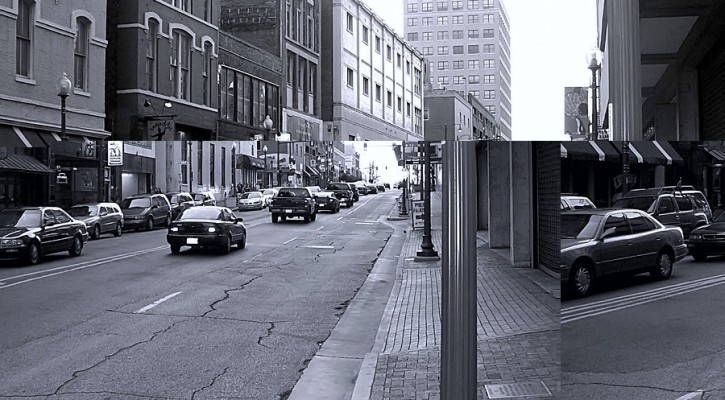
How to Make Your Vehicle Last Forever
September 25, 2014
Make your new investment count by learning the tips & tricks it takes to help your vehicle last forever.
Take Pride In Your Ride
A little bit of pride can go a long way. Just an ounce of pride keeps your vehicle’s health in the front of your mind. It encourages you to clean it, maintain it, and take care of any issues that may come up. Having pride in your ride means that you care about making it last, rather than carelessly driving it around until you find a newer model.
Know Your Mechanic
The relationship you have with your mechanic can have a dramatic effect on the lifespan of your vehicle. Find someone that you can trust with your beloved ride – not only trust to keep costs low, but also trust to make repairs the right way. You don’t want shortsighted, quick fixes that will only cause trouble farther down the road.
Schedule Maintenance
All vehicles come with a manual that can be found in the glove box. Inside the manual, you will find a maintenance schedule. Integrate this maintenance schedule with your calendar. Whether you have an old fashioned pocket calendar or use the latest phone app, it’s important that car maintenance be scheduled right alongside birthdays and doctor’s appointments.
Keeping up with your oil changes, fuel filter changes and air filter changes can make that engine run forever, because your vehicle needs clean air, clean fuel and uncontaminated oil to prevent wear and tear.
Regular maintenance also gives you a chance to chat with your mechanic, as well as spot any issues that could potentially cause serious problems down the road.
Don’t Ignore Warning Lights
Many people drive for years with the old check engine light on. While we recommend taking the vehicle to the mechanic when this light shows up, it’s not always necessary.
However, it is NEVER, EVER o.k. to ignore these three crucial lights: the engine oil light, the engine temperature gauge and the brake light. Just a few minutes with the oil light on, and you may suddenly find yourself broke down on the side of the road – and in the market for a new ride. A few minutes with the temperature gauge in the red zone, and you’re sure to see smoke start bellowing out from under the hood. A few minutes with the brake light on, and you may suddenly realize that there is no slowing down as you approach the next stop light.
Watch Your Weight
Extra weight can be an engine killer in the long run. Any added stress causes premature wear and tear, and that includes both weight inside the car and drag outside the car (such as bike racks or cargo carriers).
Don’t let weight worries keep you from having a little fun every once in a while, though. It’s fine to hook up the bike rack, tow the boat (assuming you have the proper vehicle for it), and haul a few hundred pounds of friends and family out to the lake for the weekend. However, having these demands on your vehicle during a daily commute will slowly wear out critical systems in your ride – such as the tires, suspension, exhaust, engine, transmission, etc.
Drive Easy
Easy driving means treating the gas and brake pedals like an egg: press too hard and they may break. Gently accelerate and decelerate. Keep a safe distance behind other cars on the road and anticipate when you will have to slow down or stop.
Driving easy will cause less stress on your ride, which will also result in less fuel and oil consumption. That can save you money in the short run as well as farther down the road.
In the end, it all boils down to common sense. Take care of your vehicle and drive safely, and it will last forever. We hope that these tips will lead to a long and happy life for both you and your ride.
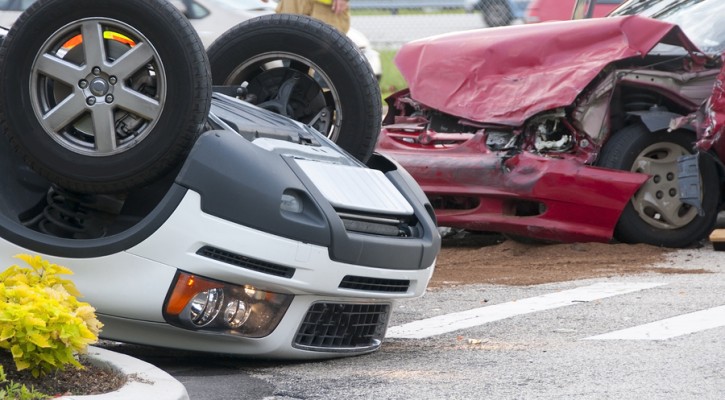
Dangerous Driving
September 24, 2014
Don’t miss out on this blogger’s rant about dangerous driving over at the Huffington Post.
The usual suspects, such as driving on a cell phone and distracted driving, are included. However, the writer also talks about other dangerous driving behaviors, such as speeding up at yellow lights and failing to use a blinker. Then, there’s the crimes of extremely dangerous driving such as speeding, weaving in and out of lanes, and cutting across multiple lanes to exit with no warning whatsoever. See the full story here:
An Epidemic of Dangerous Driving
Dangerous driving does seem to be an epidemic these days. It’s like the common cold – we all get it sometimes, and when we do, we spread it to everyone around us. One person’s neglected blinker leads to another’s erratic swerving and another’s frustrated braking and tailgating. So, wash your hands of bad driving habits and help us create a safer world for everyone.

Driver’s Guide to Wet Roads
September 23, 2014
Fall is sure to bring plenty of rainy weather this year, which means lots of driving on wet roads. Oil, engine fluids and water combine to make streets extra slick. When rain is especially heavy, standing water can cause hydroplaning. Before things get too wild out there, read these smart driving tips and you’ll be able to handle the wet roads like a pro.
Love Your Tires
You can improve traction in wet weather by maintaining good tires. Make sure the tread depth is at least 2/32-inch. You can test depth using a tread depth gauge or using the penny test. Then, use a tire gauge to test for proper inflation. While you’re at it, be sure to check for any wear & tear that could result in a leak or blowout.
Use Your Lights
Be sure to use headlights while driving in rainy weather. This will allow you to see and be seen better.
Improve Visibility
There are a few things you can do to improve your visibility. Maintaining windshield wiper fluid will allow you to quickly clear your view when those first few rain drops combine with dirt and dust to create a cloudy windshield. You can also use a rain repellent product on windows and mirrors to help water run off clean and clear. Also, don’t forget to clean the inside of your windows.
Drive Slower
Driving slower also improves visibility, as well as reduces your risk of losing control and hydroplaning. It’s also wise to leave more room when following other vehicles in traffic. Other cars and trucks spray water from the road, which could further reduce your visibility in the rain. Plus, slick asphalt makes it take longer to stop.
Know How To Regain Control
If your car starts to skid, don’t panic! Continue to look and steer the car in the direction you want to go and avoid slamming on the brakes to maintain control of the vehicle.
Know When to Pull Over
If the downpour or spray from other vehicles is too heavy, just stop driving. When visibility is so low that you can’t see the edges of the road or the vehicles in front of you, pull off the road as far as possible, turn on your hazard lights and wait out the storm.
Thousands of crashes occur each year due to rainy conditions. However, all this can be prevented with just little bit of know-how and smart, quick thinking. Keep these tips in mind the next time you drive on wet roads, and you’ll be prepared for anything.
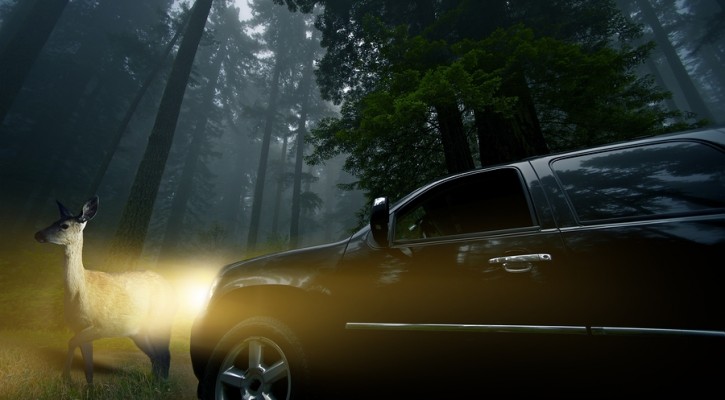
Deer Season
September 22, 2014
No, we’re not talking about the hunting season. We’re talking about the season when drivers are most likely to hit a deer.
The season of deer-infested roads is just around the corner. If you haven’t already noticed an increased number of deer crossings lately, then just wait. As mating season and hunting season begin, drivers are sure to see more deer on the roads than they have all year.
While many folks in urban and suburban areas think these animals are peaceful, majestic or Bambi-like adorable, drivers in rural areas know better. Deer are infamous in their ability to cause traffic accidents. You may not be surprised to find out that many people you know have hit a deer. However, there are also plenty of drivers out there that have been hit by a deer. They seem to stand there by the side of the road and wait as you approach, then jump out at the last minute in a suicidal attempt to hit your vehicle. Or, maybe they’re just seeing if they can make you slam on your brakes and swerve off the road?
To top it all off, many states are witnessing an increase in the already-dangerously overpopulated numbers of deer. So, not only will drivers be seeing more deer on the road than in previous months, but they will be seeing more deer on the road than in previous years as well.
October, November and December are the months that drivers are most likely to have a deer-related traffic accident. So, keep these tips in mind as fall turns into winter and the animals flee to the streets:
- Deer are most active between 6 PM and 9 PM. If at all possible, avoid driving in rural or even some suburban areas during this time.
- When driving at night, use your high beams as much as possible. As long as there are no other drivers in front of you, or other legal restrictions, the high beams should be on. This will allow you to see deer as they approach the road from nearby woods.
- Pay attention to DEER CROSSING signs. These signs let drivers know where deer are most active.
- Never drive distracted. Drivers should never drive distracted, whether it’s deer season or not. However, distracted driving is even more likely to result in an accident when it is done on a deer-saturated street.
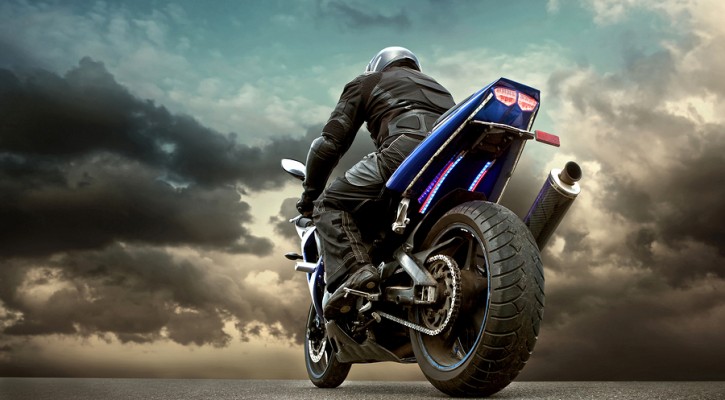
Control
September 22, 2014
God grant me the serenity to accept the things I cannot change, the courage to change the things I can, and the wisdom to know the difference.
Control has a very special meaning to motorcyclists. When you’re on a bike, there are many things that you cannot change. Things such as road conditions, other drivers and the occasional deer or squirrel that darts into your path… these are out of your control.
However, your own riding behavior, reaction time and motorcycle intelligence are things that you can change. These three integral parts of accident avoidance should be well-known before any new motorcyclist takes their first ride.
Riding Behavior
Good riding behavior is the first step in preventing a motorcycle crash. Get into the habit of riding safely and carefully, wearing all the gear all the time (ATGATT), and keeping an eye out for dangerous drivers and other road hazards. Don’t become one of those careless riders that speeds, weaves in and out of traffic, tailgates and cuts people off, and ignores highway safety laws.
Reaction Time
A quick reaction time is essential to avoiding fatal motorcycle crashes. As soon as you mount your motorcycle, shift your brain into a hyper-alert state, ready to respond to any circumstances with lightning-fast speed. Never attempt to ride when you are sleepy or inebriated.
Motorcycle Intelligence
Take a motorcycle safety course. Then, take it again next year. Take it as many times as you need to refresh your riding skills each year, especially after the long hiatus of winter. Motorcycle safety courses teach everything you need to know about avoiding and preventing motorcycle accidents, as well as give you the opportunity to practice some life-saving riding techniques.
These important tips will help you to change the things that you can, and help you gain control no matter what happens while you are out on the road. While others may blame their accidents on the weather, the road conditions, the traffic or the wildlife, you will be able to brag about how well you handled your own motorcycle to avoid crashing entirely.
Too bad you can’t make “how I avoided crashing” reports to your insurance company.
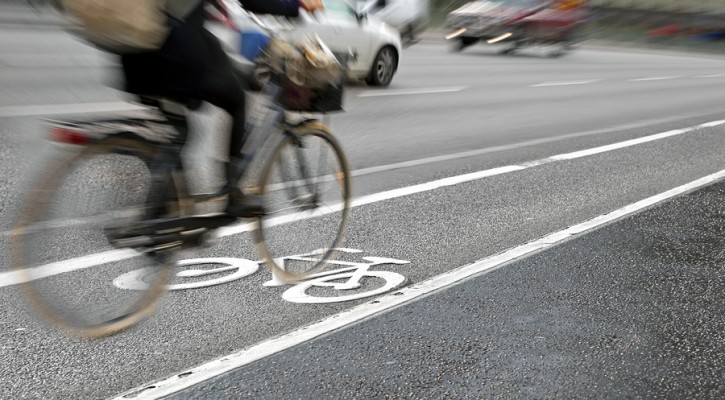
California’s Bicycle Buffer Zone
September 18, 2014
On September 16, 2014, the Three-Feet-for-Safety Act took effect. This new law makes it illegal for drivers to pass within three feet of a bicycle, giving cyclists a safer bicycle buffer zone when traveling on roadways.
In case you haven’t seen it, the Three-Feet-for-Safety video has been making the rounds. It makes a great case for the bicycle buffer zone, and it’s actually really, really funny:
As funny as the video is, bicycle safety is a serious matter. Drivers often get a little too close for comfort when passing bicycles. Likewise, cyclists often operate their bicycles recklessly, riding outside of bike lanes and ignoring traffic signs and lights. It’s a two-way street, so to speak.
Hopefully this new California law will make things safer – at least on one side of the metaphorical street. Drivers in every state should give cyclists plenty of room and pass them as safely as possible. Not only will it save money on traffic fines, but it will save lives.
So the next time you have to share the road with a cyclist, remember the three-foot bicycle buffer zone.

Fall Motorcycle Safety
September 17, 2014
The seasons are changing. The leaves are changing. The weather is changing. So it makes sense that your motorcycling experience may be changing as well. Get all the information you need for fall motorcycle safety and you’ll be able to handle this beautiful riding season like a pro.
It’s Tune-Up Time
As the summer riding season ends and autumn sets in, your bike may be ready for a tune up. Check the mechanics, fluid levels, controls and tires… especially the tires. Long summer days can wear out your wheels in no time. Check for any wear and tear, make sure the tires are properly inflated and the tread is still good.
Be Prepared For Cold Fronts
Temperature changes can be drastic in the fall. Warm, muggy mornings may give way to chilly, even freezing cold afternoons – and vice versa. Pack extra clothes and gear to change into as the temperatures fluctuate. Or, if your morning starts off cold, dress in thermal layers that can be shed throughout the day.
Protect Your Eyes
Cold air is rough on the eyeballs. Consider wearing a full visor helmet, or purchasing some riding goggles to keep your eyes protected from the harsh winds of fall season cold fonts.
Beware of Rain
The rain is no place for a beginner biker. However, it’s not always avoidable either. Keep a sharp eye on the weather and always be prepared for a few showers. Read our tips on Riding in the Rain to be fully prepared.
Watch for Autumn Road Hazards
Wet roads, fallen leaves, active wildlife, and end-of-summer construction projects are all things to look out for while you are riding this fall season. Keep your eyes wide-open and always be ready for a quick reaction time when hazards are spotted.
Knowing the risks of riding in the autumn months will help motorcyclists ride safe this season. So, keep these t
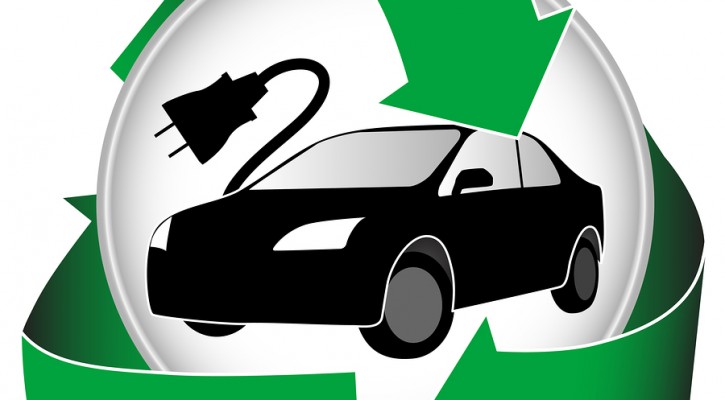
Electric Vehicles Not So Slow and Boring
September 16, 2014
Think eco-friendly, electric vehicles are slow, weak and boring? Think again.
Killajoule, the world’s fastest electric motorcycle, recently achieved a top speed of 241.901 mph at the Bonneville Salt Flats. It’s actually the fastest sidecar motorcycle of any type. Then there’s the growing number of electric vehicles dominating the Pikes Peak International Hill Climb race. And, the Buckeye Bullet from the Ohio State University is a four-wheeled electric that has topped 300 mph.
The truth is, electric vehicles have some great advantages over gas engines. They have more torque, and can leave other muscle cars in the dust from a dead stop. So, the slow and boring image is actually quite unfair.
Want to know more about electric vehicles? This excellent post from cartalk.com has the lowdown on electric vehicles past, present and future:
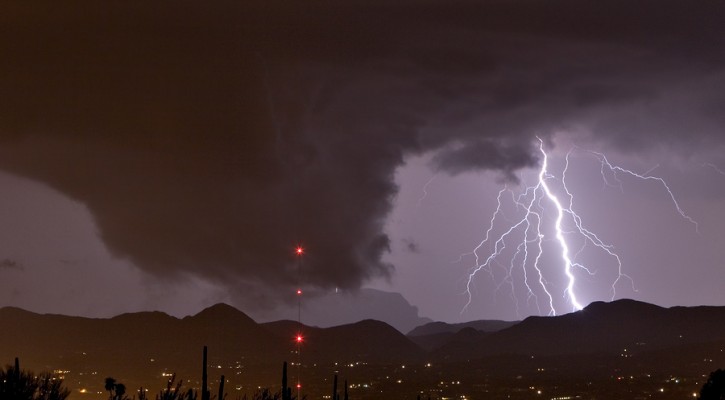
Driving Through El Nino
September 12, 2014
Rain is on the way! REJOICE!
As vast parts of the country suffer through prolonged drought, this year’s El Nino is a welcome cluster of storms. However, all this rainy weather is sure to pose some safety hazards as well.
Drive smart through El Nino by studying up on these tips and tricks:
Avoid Dangerous Travel. During severe weather and flooding, it’s best to not drive at all. However, many drivers have obligations that will force them onto the road in spite of present dangers.
Drive Slow. This is a no-brainer. Driving slow will not only help maintain traction and control on slippery roads, but also allow you to see hazards sooner.
Avoid Puddles. Puddles often form where roads have been damaged. A deep pothole will not only damage your tires, but also your engine. Water deeper than 6 inches will cause most vehicles to lose control and/or stall.
Turn Around Before Your Drown. If water is flowing over the road, then turn around. It only takes 6 inches to stall a vehicle, 1 foot to float it, and 2 feet to sweep it down the river or creek. This applies to trucks and SUV’s as well.
Be thankful for the much-needed rain brought by El Nino this year. And, be careful as you navigate your way through it!

California’s Plan to Pay for Roads
September 10, 2014
In the past, the gas tax was used to pay for roads. Those were the days. Americans drove gas-guzzling cars and trucks, driving for both fun and for commute. Then they wised up. They drove less, drove fuel efficient vehicles, and began to save money by using public transportation.
However, those money-saving tactics came at a cost. With less tax revenue from gas taxes, the nation’s roads have been underfunded. Building new roads to meet today’s traffic needs has become more difficult, as the states struggle just to keep up with repairs on existing infrastructure. Traffic has gotten worse. Potholes and cracks have increased. And, few lawmakers want to raise taxes to deal with the problem.
However, California may be paving they with their plan to pay for roads. See the full story here:
